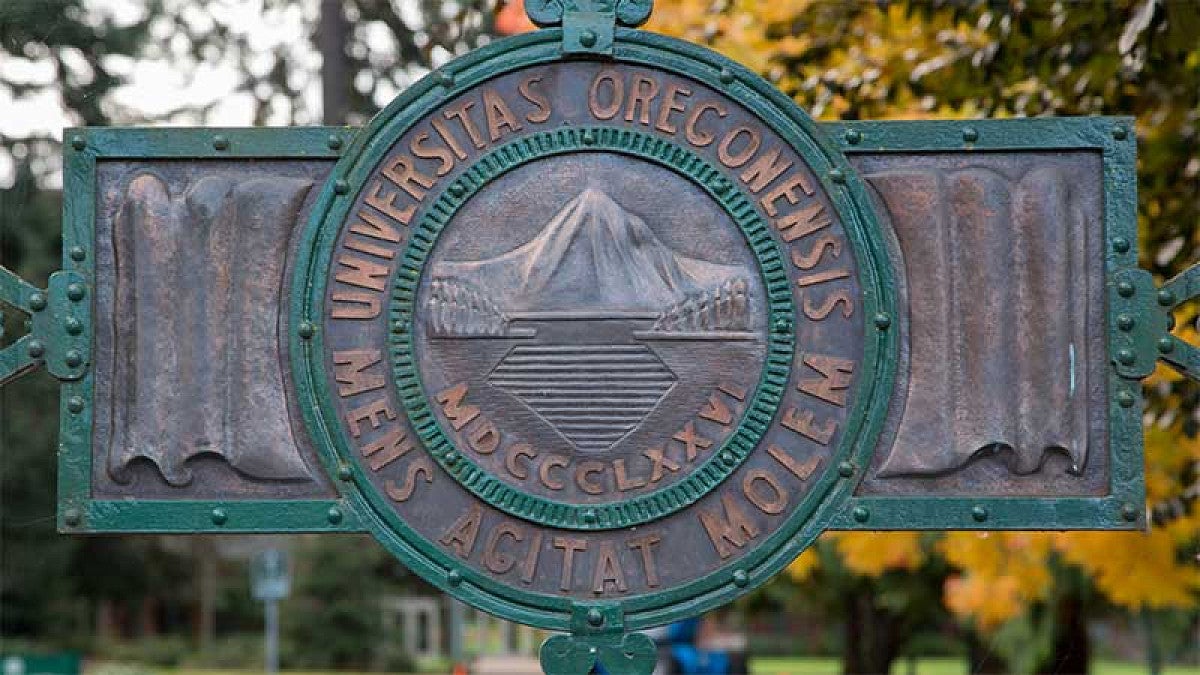The Board of Trustees of the University of Oregon heard a report about the university’s strategic plan fourth goal key performance indicators and listened to presentations on the financial foundation of the university in their Dec. 9-10 meeting on the Portland campus.
Provost Chris Long, along with vice presidents and deans from around the university, presented more in-depth on Oregon Rising and the fourth goal of the UO’s strategic plan: accelerating the UO’s impact on the world through its signature scholarship. Specifically, the group spoke about key performance indicators for the goal and how to measure success.
“If we don’t have a strong sense of the KPIs that drive our effort, we’ll be unable to effectively identify the strategies that will elevate the quality of work we’re doing across all of our signature areas,” Long said.
Goal four of Oregon Rising focuses on the UO’s impact in four areas:
- Environmental resilience.
- Youth and behavioral health.
- Human performance and sport.
- Innovation and scientific impact.
The board also acted on three academic program approvals. It voted to approve moving the master of science in historic preservation from the Portland campus to the Eugene campus, and it approved the creation of two new programs: a bachelor of science in materials science and technology as well as an education specialist degree in school psychology.
Trustees received an annual capital projects report and had a preparatory tuition-setting discussion.
Trustees also received quarterly financial and treasury reports, which showed the university below previous financial projections based on enrollment numbers from the fall term census and because of increases in certain expenses. Final enrollment for first-year students for fall term was 5,113, which is the UO’s second-largest class ever.
But the numbers showed 450 fewer nonresident students than expected, reducing projections in expected revenue by $2.3 million for the fiscal year.
During two executive sessions the board discussed data center security assessment findings and collective bargaining.
Carol Keese, vice president for communications and chief marketing officer, and Ken Goldstein, senior vice president for survey research and institutional policy at the Association of American Universities, presented results from an August survey of Oregonians about the UO’s perception and strategies for improving it.
During the reports section of the two-day meeting, the board listened to public comment and reports from the Officers of Administration Council and United Academics. Associated Students of the University of Oregon President Mariam Hassan and University Senate Vice President Dyana Mason both gave reports. Provost Long gave his report at the start of the first day.
President Karl Scholz, in his board update, gave a report on the vice president for enrollment management search and spoke about his conversation on stage during the Oregon Business Leadership Summit with Oregon State University President Jayathi Murthy.
Scholz ended his time reflecting on how Oregon’s athletics success helps raise the profile of the entire university.
“The success of one part of the university is a success for the whole,” Scholz said. “Athletics are an incredible gateway to those curious about Oregon. Athletics have a positive impact on awareness of universities, particularly for prospective students who live outside of the state. As our Director of Admissions, Erin Hays, tells her team, ‘When the sports spotlight shines, be ready to showcase the entire university while people are looking.’
“And right now, a lot of people are looking.”
The agenda, materials and recordings of the meeting are available on the board website.
—Ben Schorzman, University Communications


